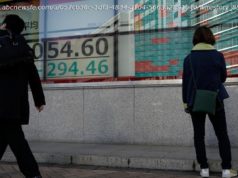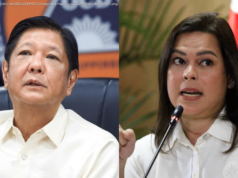Eliminating Puerto Rico’s debt would speed the island’s recovery following Hurricane Maria, but it could also lead to crushing losses for investors.
Eliminating Puerto Rico’s massive debt would speed the island’s recovery following Hurricane Maria’s devastation, but it could also lead to crushing losses for investors.
The list of losers would range from wealthy hedge funds that made risky bets on the island’s debt to Puerto Ricans who are already struggling financially.
Puerto Ricans own about 40% of the island’s debt while hedge funds own about 20%, according to Municipal Market Analytics, a Concord, Mass.-based research firm.
Others who could suffer losses include mainland American retirees, mutual fund investors and individuals who snapped up Puerto Rican bonds to take advantage of their tax-free status.
The hodgepodge nature of the U. S. territory’s borrowing illustrates the complexity of the ongoing attempt to disentangle the island from its $74 billion debt, which makes rebuilding a nearly impossible task absent a major intervention.
Moody’s pegged Puerto Rico’s Maria losses at up to $95 billion, including the destruction of the island’s electrical grid and massive damages to communications infrastructure, homes, businesses, hospitals and roads.
Momentum is building for a significant cut in Puerto Rico’s liabilities after President Trump suggested Tuesday that they should be axed. Afterward, the island’s bonds tumbled to an all-time low, illustrating the gravity of his remark for investors.
The benefits of Trump’s proposal: financial breathing room for Puerto Rico to rebuild.
The downside: losses for companies and people who bet their finances on the island.
«Wiping out Puerto Rico debt is not necessarily the ideal outcome for Puerto Ricans,» said Josh Esterov, an analyst who tracks Puerto Rico for independent research firm Credit Sights. «You’re wiping out a lot of their savings. Even if it’s good for the economic profile of the commonwealth going forward, I don’t think that’s the desired outcome.»
No one disputes that Puerto Rico needs debt relief to pay for essential services and get back on its feet after Maria.
The question is: Which pot of money will provide that help?
It could come in the form of an injection of money from Washington, though it’s more likely aid would be funneled directly into emergency rebuilding.
Trump and lawmakers could apply pressure on Puerto Rico’s federal oversight board to push for steep debt cuts negotiated in court, which would mean losses for creditors. But a federal judge would have to sign off on those cuts, and the process could take years.
The last resort is the island’s own meager finances.
Esterov said the island now has «a much stronger argument for redirecting some of those funds away from debt service and toward rebuilding, relief or rescue.»
Many Americans are invested in Puerto Rico without even realizing it.
More than 40% of U. S. municipal bond funds held Puerto Rico debt at the time the island filed for the equivalent of bankruptcy protection in May, according to Morningstar data provided to USA TODAY. Those holdings totaled $7.8 billion.
Meanwhile, U. S. mutual funds held about $8.4 billion in Puerto Rican debt at the time, according to Morningstar.
That debt could be subject to steep cuts during the island’s restructuring effort, which had barely begun when Maria hit.
Bond insurance may cover some of those losses, but anyone who bet their portfolio on Puerto Rico should be nervous. Bond insurers Ambac, MBIA and Assured are on the hook for $9.6 billion, $8.4 billion and $8.2 billion in Puerto Rico debt, respectively, according to Credit Sights.
Puerto Rico’s debt is simply “unpayable” in full, Municipal Market Analytics partner Matt Fabian said.
«While there are regular mainland investors, there are also a lot of Puerto Ricans that are swept up in this too,» Fabian said.
Key reasons why the island was already teetering before Maria included its population loss and its job market crisis.
Maria’s destruction is expected to worsen both. The island could lose 400,000 residents this year, dropping to 3 million, Fabian projected. That will lead to steep revenue losses, further draining Puerto Rico’s ability to pay its obligations.
Despite the potential hit to Puerto Ricans’ pocketbook, many island proponents are still backing steep cuts.
“There’s no way for Puerto Rico to be able to rebuild, let alone recover, unless the debt is canceled,” said Eric LeCompte, executive director of Jubilee USA Network, a religious coalition that is pushing for Puerto Rico debt relief. “We knew we were on the path to get a lot of the debt cut and all of it restructured. The hurricanes have changed everything.”
Follow USA TODAY reporter Nathan Bomey on Twitter @ NathanBomey .






